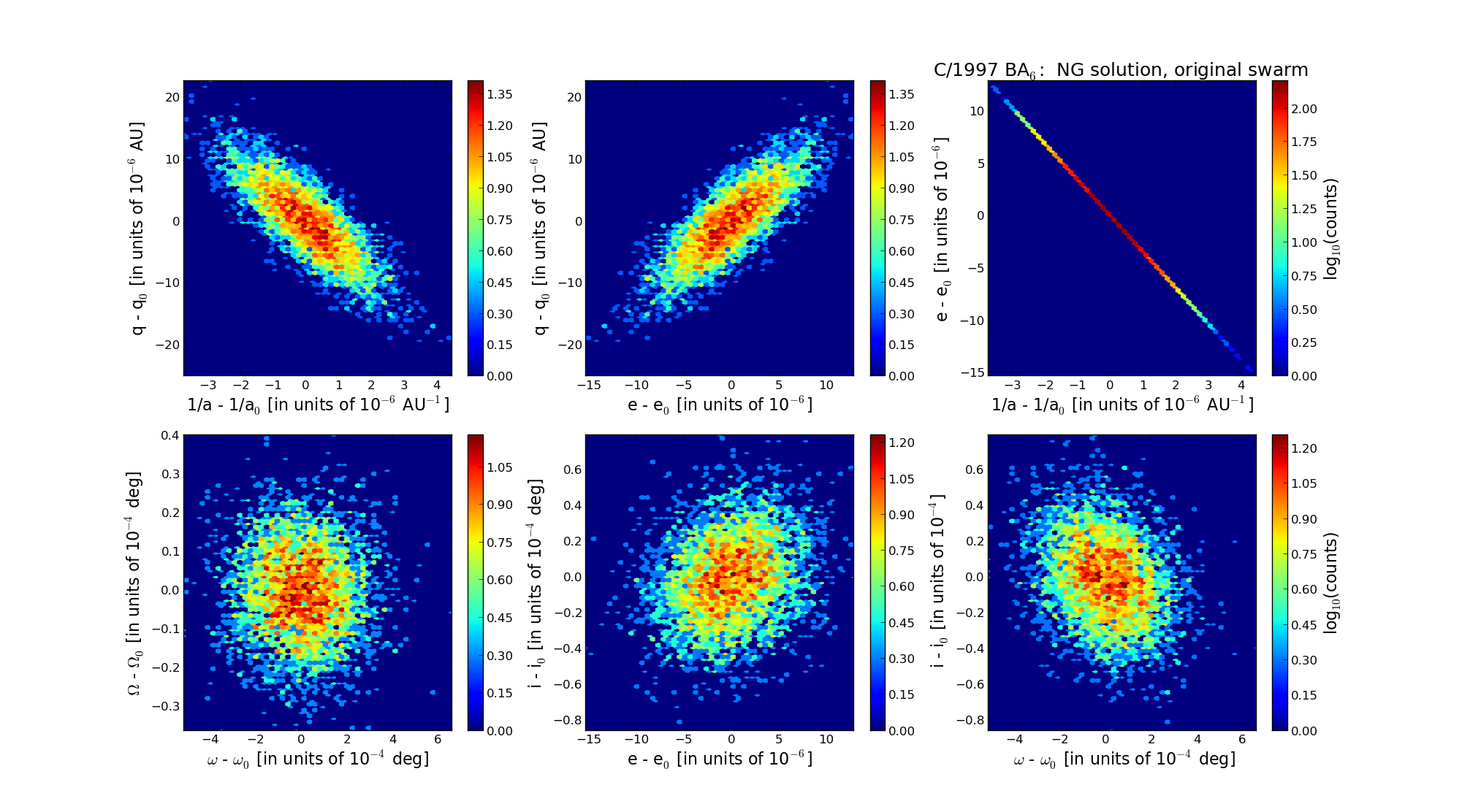| Solar System Dynamics & Planetology Group |
 |
C/1997 BA6 Spacewatch |  |
| Solar System Dynamics & Planetology Group |
 |
C/1997 BA6 Spacewatch |  |
| number of observations | 529 |
| number of residuals | 1054 |
| data interval | 1997 Jan. 11 — 2004 Sep. 15 |
| rms [arcsec] | 0.67 |
| orbit quality class | 1a+ |
| Epoch (TT) | 19991208.0 | = JD 2451520.5 |
| time of perihelion passage (TT) | 19991127.566151 | ± 0.000334 |
| perihelion distance | 3.43630558 | ± 0.00000451 |
| eccentricity | 0.99882316 | ± 0.00000508 |
| argument of perihelion [deg] | 285.935698 | ± 0.000033 |
| longitude of the ascending node [deg] | 317.663829 | ± 0.000010 |
| inclination [deg] | 72.714861 | ± 0.000022 |
| inverse semimajor axis [10-6 au-1] | 342.47 | ± 1.48 |
| Nongravitational parameters [10-8 au/day2] | A1 = 3341 ± 118 | A2 = 24.2 ± 54.1 | A3 = -29.8 ± 11.7 |

| Epoch (TT) | 16970213 | |
| time of perihelion passage (TT) | 19991128.142457 | ± 0.000636 |
| perihelion distance | 3.44037125 | ± 0.00000574 |
| eccentricity | 0.99989050 | ± 0.00000397 |
| argument of perihelion [deg] | 285.894624 | ± 0.000149 |
| longitude of the ascending node [deg] | 317.682671 | ± 0.000011 |
| inclination [deg] | 72.629264 | ± 0.000022 |
| inverse semimajor axis [10-6 au-1] | 31.83 | ± 1.15 |
| Epoch (TT) | 23070217 | |
| time of perihelion passage (TT) | 19991128.384619 | ± 0.000943 |
| perihelion distance | 3.43278727 | ± 0.00000591 |
| eccentricity | 0.99861836 | ± 0.00000589 |
| argument of perihelion [deg] | 285.874864 | ± 0.000187 |
| longitude of the ascending node [deg] | 317.586592 | ± 0.000014 |
| inclination [deg] | 72.674074 | ± 0.000023 |
| inverse semimajor axis [10-6 au-1] | 402.48 | ± 1.72 |